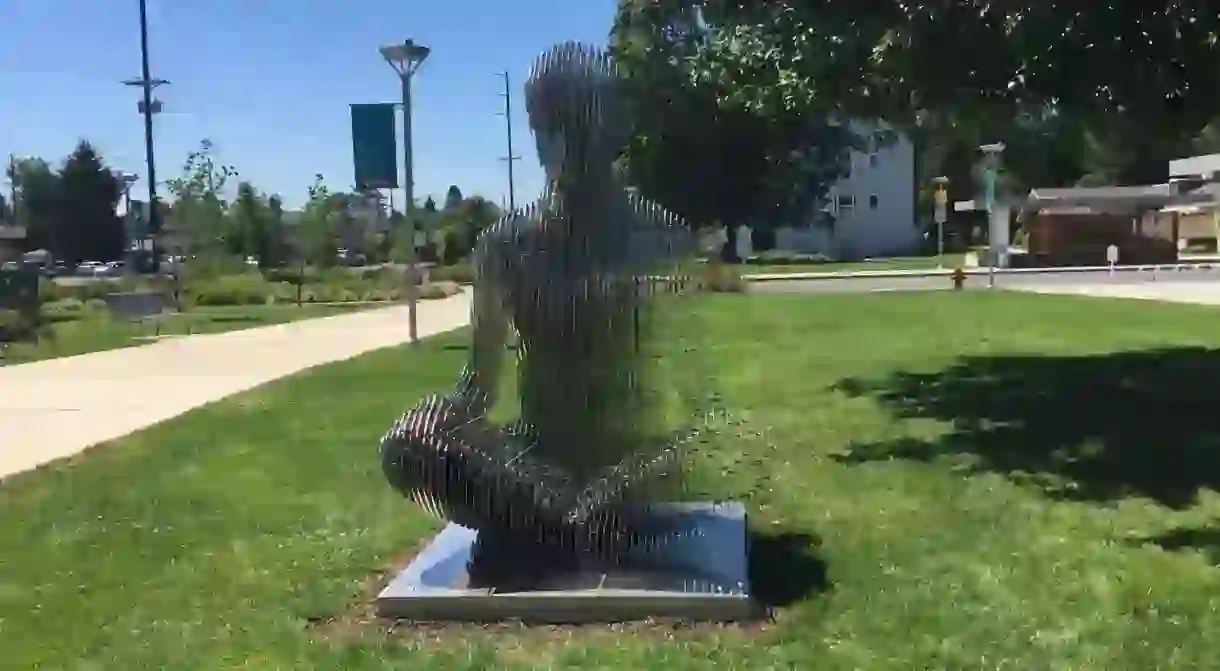The Invisible Julian Voss-Andreae Sculptures

Look from one angle and you see a woman kneeling in a manicured park. Look from another and only a trace remains, a shimmer in the shape of a human.
Julian Voss-Andreae’s sculpture pulls a clever trick. The German-born, US-based artist creates men and women out of thin ribbons of metal, around three quarters of an inch (about two centimeters) apart, connected by small struts. Seen from side-on, the ribbons form a whole, giving Voss-Andreae’s epic figures a robust physicality. Seen head-on, they look like ghosts.

An artist’s quantum quest
You can get a lot of pleasure from just looking at these ‘quantum’ sculptures, walking from side to side to watch them flow in and out of existence. But these sculptures also aim to make you think.
Voss-Andreae studied experimental physics at the universities of Berlin, Edinburgh and Vienna. By being both ‘there’ and ‘not there’, his sculptures are designed to illustrate the idea that the subatomic particles that make up everything are constantly moving on paths we can’t understand or predict. That means the most fixed of things, when seen from another angle, are no more solid than a wave.
Exploring sculptures and space-time
Voss-Andreae’s art has always been underpinned by science, and he’s also made hollow sculptures of carbon molecules and used gold and steel thread to show how particles might move through space and time.
If this is hard to get your head round, try to see his work in the flesh. Voss-Andreae’s success means there are numerous places you can get closer to his sculptures. There’s a twisting ‘protein sculpture’ (Synergy) in New Jersey’s Rutgers University; a cross-legged woman (The Reader) in Portland Community College, Oregon; and a sculpture of an antibody (Angel of the West) in Jupiter, Florida, that really does look like a winged spirit.
Whether you understand the theory behind these works or not, Voss-Andreae’s ingenious, unique sculptures are sure to stop you in your tracks.













